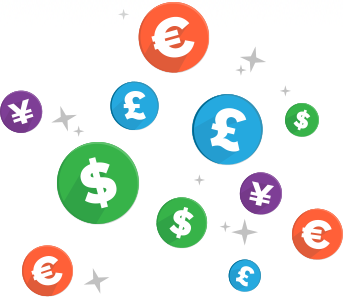Introduced on the 1st of January 1875, the Danish Krone is the official currency of Denmark, Greenland and the Faroe Islands. Danish Krone is subdivided into 100 ore. The symbol for the Krone is KR and it is also called the Danish Crown. The Krone is pegged to the euro via the ERM II, the European Union's exchange rate mechanism.
Some Facts That You Ought To Know About The Dkk Currency:
1. The short name for Danish Krone is DKK.
2. 100 øre are 1 krone
3. KR is the symbol of the Danish Krone.
4. The maximum used coins are 50 ØRE, 1 KR, 2 KR, 5 KR, 10 KR, 20 KR.
5. The most frequently used banknotes are 50 KR, 100 KR, 200 KR, 500 KR, 1000 KR.
6. Denmark’s National Bank issues the coins and banknotes of the Danish Krona and is the central bank of this region.
Danish Krone - History of Danish Krone
Danish Krone is the official currency of Denmark that was introduced in the year 1875. The history of the Danish Krone goes back centuries when Danish kings kept on changing currencies to bring more stability to the financial system. The reason behind taking multiple switches in the coin was also to reduce the silver content in the coin as it was not financially viable. Years of demonetisation finally resulted in the introduction of the Danish Krone and it brought great financial stability to the market. Danish Krone was the first paperback currency in Denmark and it brought relief from the hassle of transactions that were done earlier using coins.
The Danish Krone was pegged to the global market multiple times starting from the 1880s but because of war conditions and failing economic setups all around the globe, it was not successful. During world war 2, Danish Krone was pegged to German currency for the first time and following this it was also pegged to British Pound. Later on, it was pegged to Euro which has increased its value to a great extent. Since January 1987, the exchange rate of the Danish Krone has remained unchanged and the country continues to follow a fixed exchange rate.
The pegging rate is 7.46 and despite Denmark being a part of the EU and its attempt, it could not become a member of the Eurozone and therefore Krone is its official currency. The present value of the Danish Krone is expected to increase in the future as the country exports more than it imports and is increasingly being used in global trade.
The Danish Krone is issued, managed and controlled by the central bank of Denmark – the Dansmark Nationalbank. Back in the year 2016, the bank outsourced the printing of paper notes. The currency is available in six denominations: a 50 øre coin (half a krone), 1, 2, 5, 10, and 20. Bank notes are available in 50, 100, 200, and 500 kroner. Being a native currency of Denmark, Danish Krone is also accepted in Greenland and Faroe Islands due to their political and diplomatic relations.
The Denmark currency has been a work of the kings in the early 1800s and therefore it has always represented unique design and intricacies. Currently, it features images of bridges and holograms. Danish Krone is presented as the Kr symbol. In addition, Danish coins differ in size which also indicates their value. The thicker and bigger the coin, the higher its value.
Factors Affecting the Exchange Rate of Danish Krone
The exchange rate of the Danish Krone has been fixed against Euro and has remained unaltered since January 1987. Fixing the exchange rate was done with an intention of bringing economic stability to the country. It was a chain of events including high unemployment, high inflation rates, and economic imbalances when the country decided to fix its exchange rate. There are two major factors that drive the fixed exchange rate of the Danish Krone:
1. Interest Rate
The interest rate of the Krone, as decided by the Danmarks Nationalbank, also impacts the exchange rate of the Krone in the international scenario. If the exchange rate goes in a depreciating direction, the interest rate of the Krone is likely to be raised by the bank. However, if the value of the Krone shows an appreciating trend, Krone's interest rate will fall down. This way the management of the interest rate of Krone impacts and maintains the overall exchange rate of the Danish currency.
2. Intervention
Danmarks Nationalbank has the authority to intervene in order to maintain the exchange rate of the Danish Krone. In case Krone is moving in an appreciating direction, Danmarks Nationalbank will probably purchase Euro and sell Krone. On the other hand, if the value of the Krone goes in a depreciating direction, the bank will purchase the Krone and sell Euro. In this way, the Danmarks Nationalbank plays a role of intervention and makes sure the value of Krone remains positive.
Danmarks Nationalbank keeps altering the interest rates and sale/purchase of the Krone against the Euro so that the exchange rate remains stable and favourable for Danish Krone. The demand for the Krone against Euro plays a centric role in the Krone's exchange rate. If you are willing to send money from Denmark to a different country or make international transactions, you can use the exchange rate calculator to calculate the total exchange amount as per the current rate.










